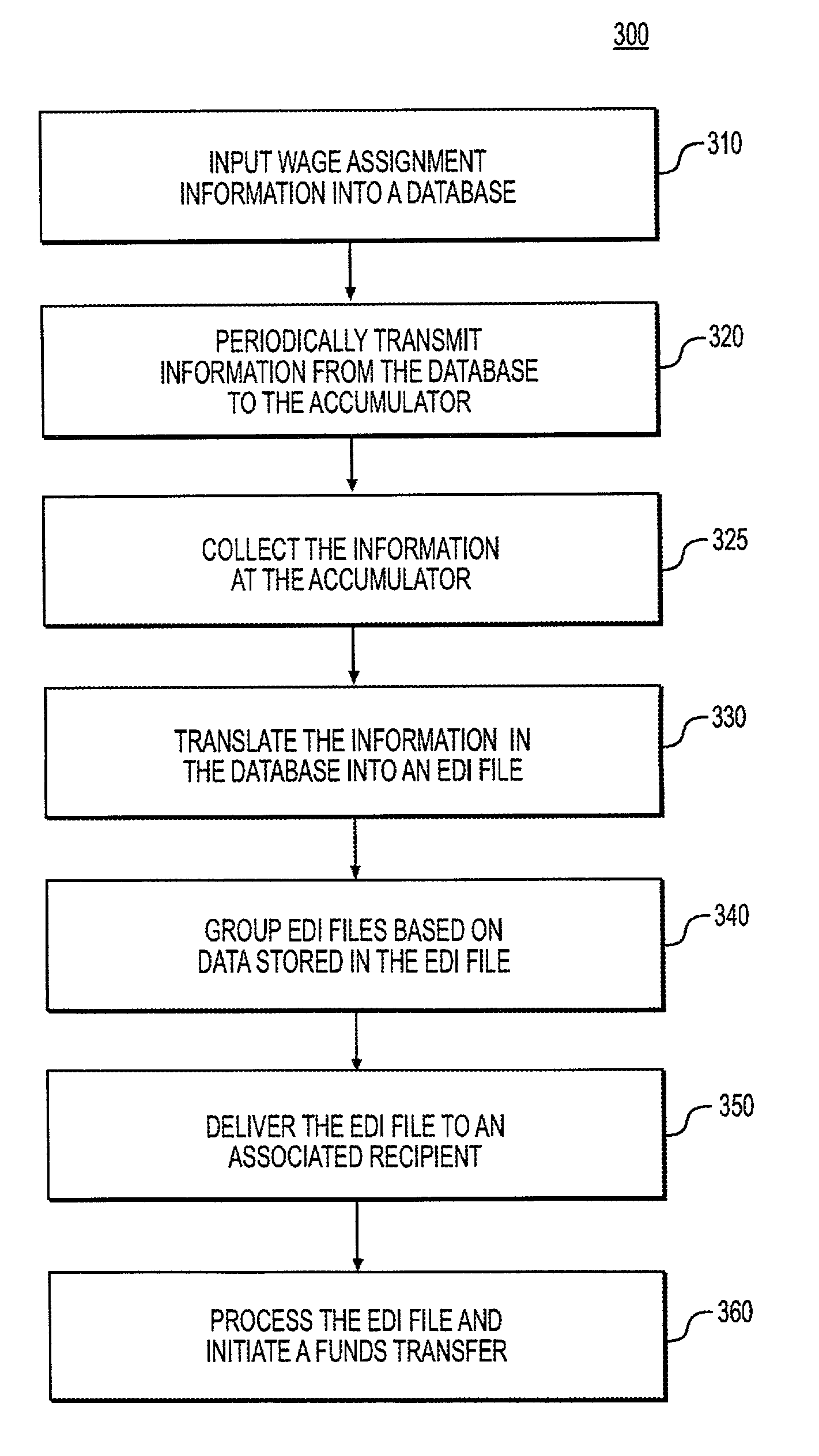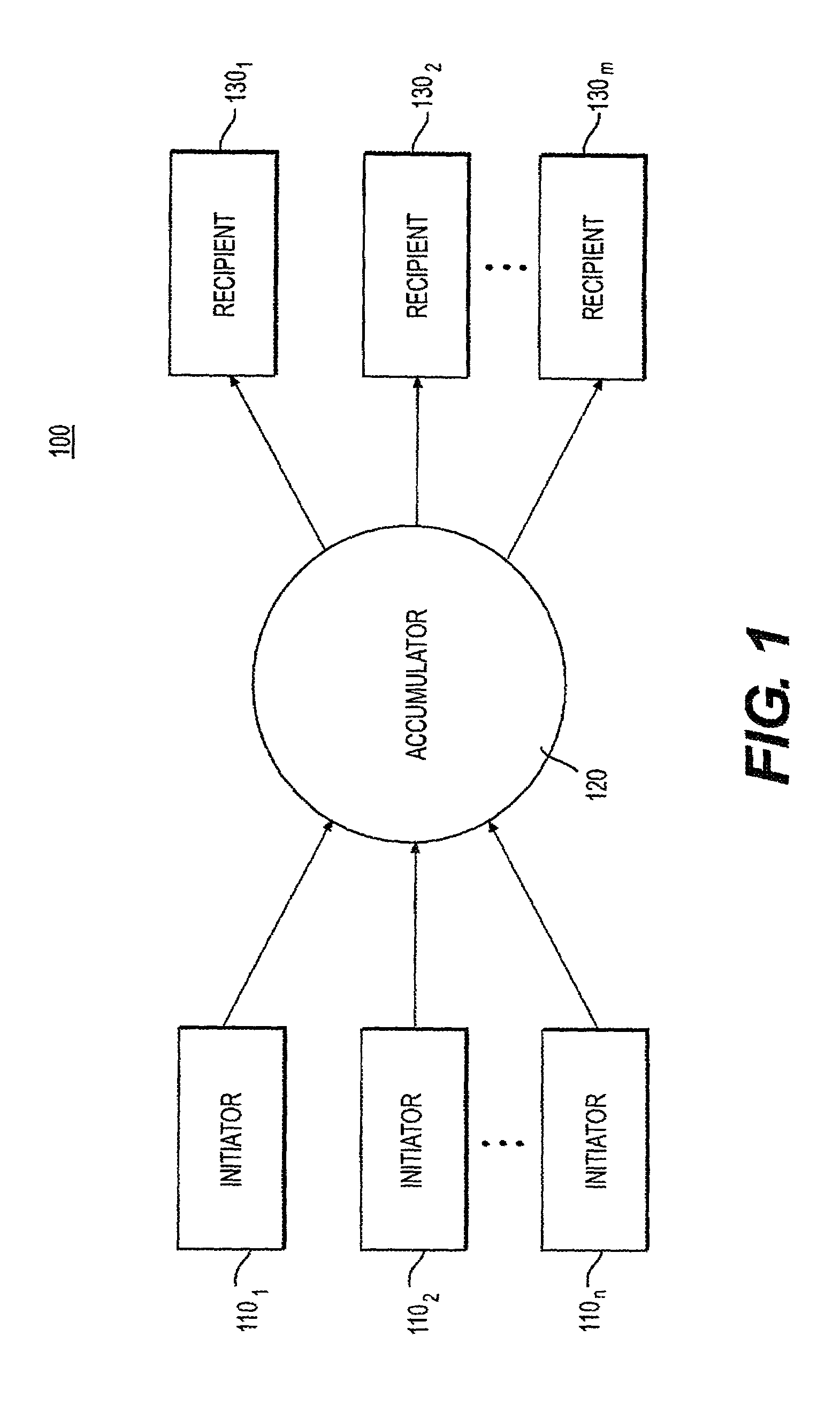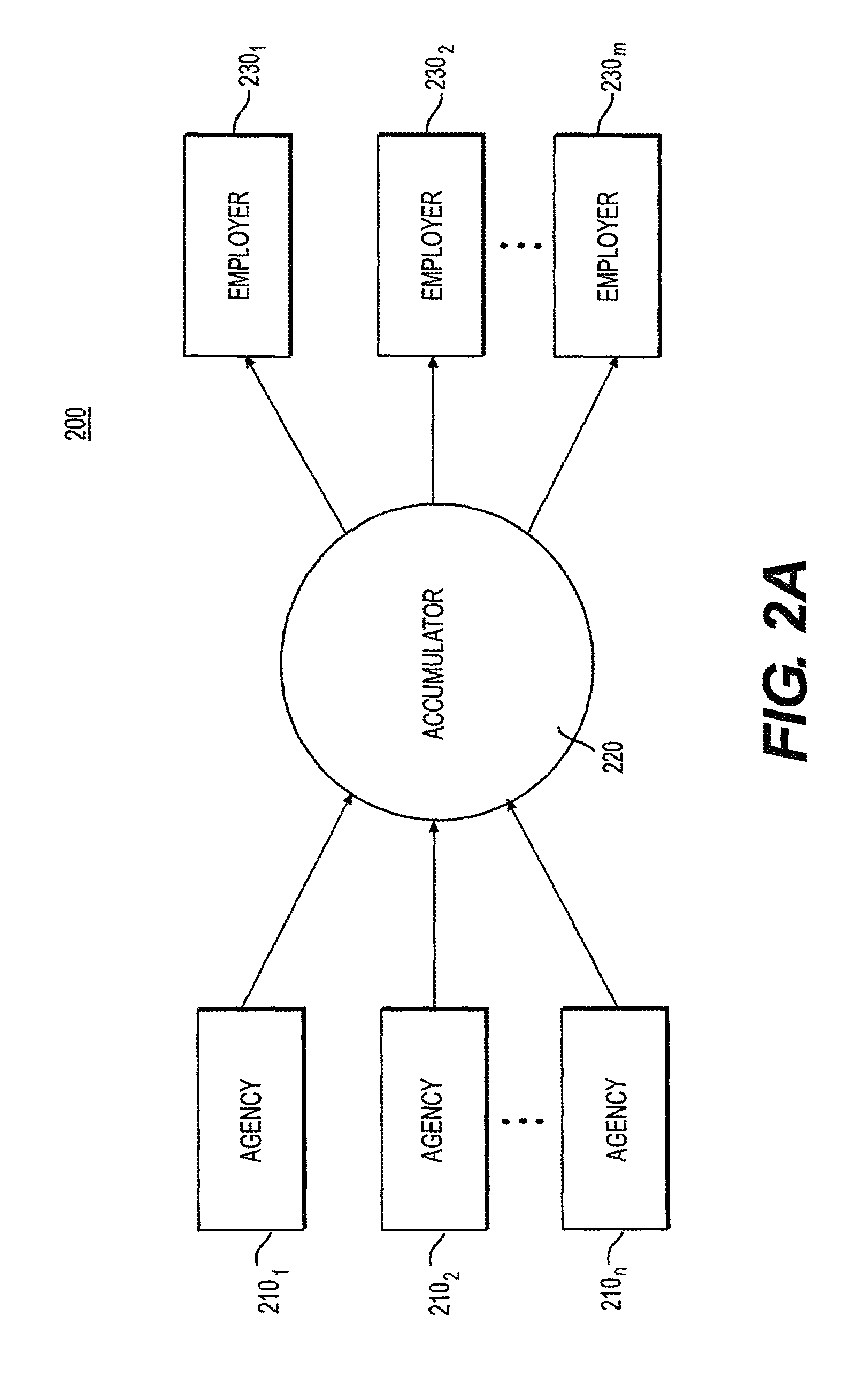Method and apparatus for electronic collection, translation, grouping, and delivery of wage assignment information
a technology of electronic collection and information, applied in the field of electronic collection, translation, grouping, and delivery of wage assignment information, can solve the problems of significant temporal and structural inefficiencies in electronic implementation, limited standards to business transactions, and manual implementation the least efficient way to process wage assignmen
- Summary
- Abstract
- Description
- Claims
- Application Information
AI Technical Summary
Benefits of technology
Problems solved by technology
Method used
Image
Examples
Embodiment Construction
[0066]A preferred embodiment of this invention, known as NEWWS® (National Employer Wage Withholding Service), is presently marketed by Lockheed Martin IMS, now ACS State & Local Solutions, Inc. The scope of the present invention, however, encompasses modifications and variations as described by the methods and apparatus described herein or as contained within the scope of the listed claims and their equivalents.
[0067]A. Introduction
[0068]The system of a preferred embodiment of the invention avoids the inefficiencies and shortcomings of the present wage assignment systems and methodologies by providing for the electronic collection, translation, grouping, and delivery of wage assignment information. Systems consistent with the present invention include receiving wage assignment information at an initiator regarding a wage assignment. The initiator gathers the wage assignment information and transmits the information to an accumulator. The accumulator collects the wage assignment info...
PUM
 Login to View More
Login to View More Abstract
Description
Claims
Application Information
 Login to View More
Login to View More - R&D
- Intellectual Property
- Life Sciences
- Materials
- Tech Scout
- Unparalleled Data Quality
- Higher Quality Content
- 60% Fewer Hallucinations
Browse by: Latest US Patents, China's latest patents, Technical Efficacy Thesaurus, Application Domain, Technology Topic, Popular Technical Reports.
© 2025 PatSnap. All rights reserved.Legal|Privacy policy|Modern Slavery Act Transparency Statement|Sitemap|About US| Contact US: help@patsnap.com



